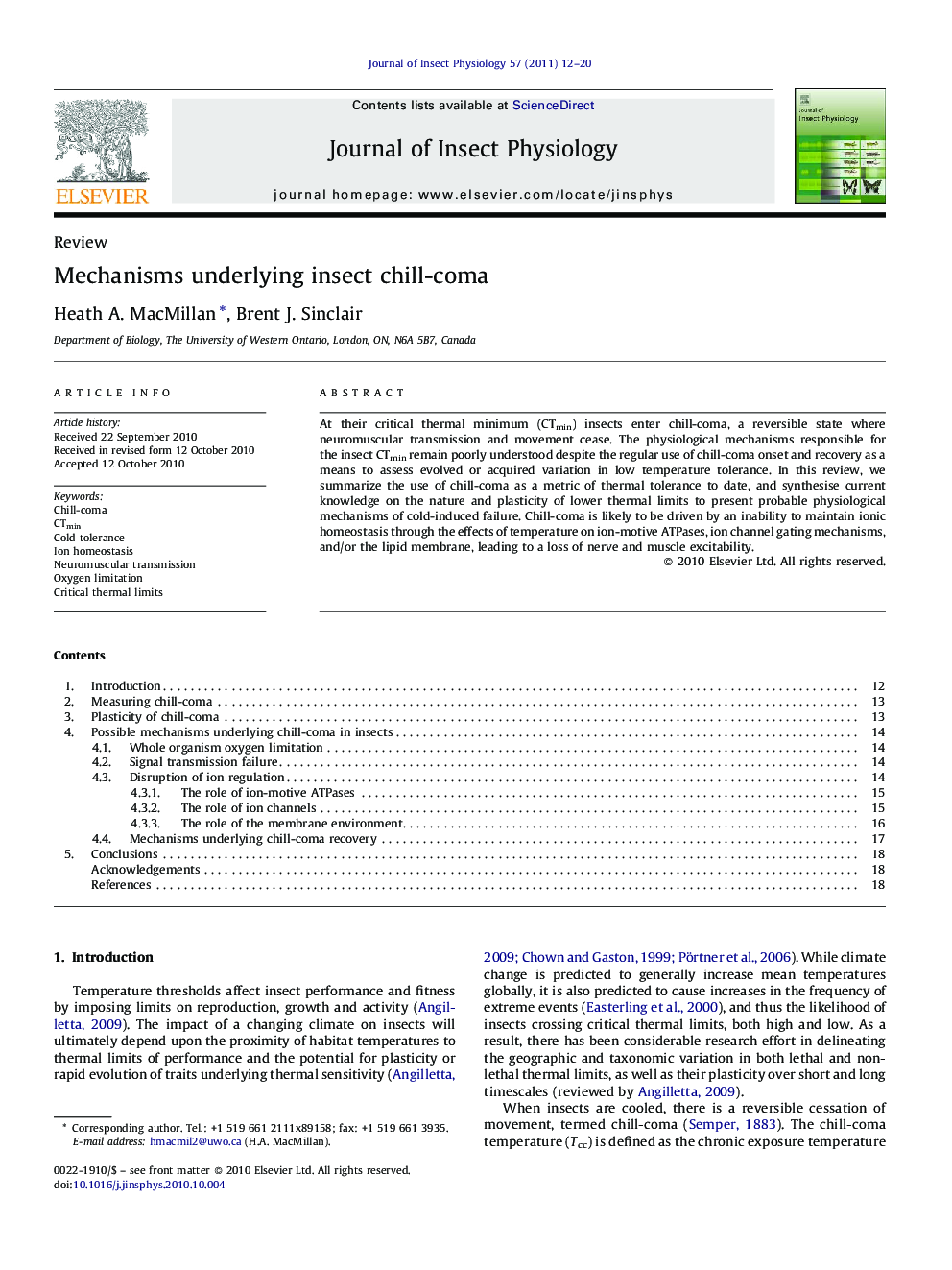| Article ID | Journal | Published Year | Pages | File Type |
|---|---|---|---|---|
| 2840958 | Journal of Insect Physiology | 2011 | 9 Pages |
At their critical thermal minimum (CTmin) insects enter chill-coma, a reversible state where neuromuscular transmission and movement cease. The physiological mechanisms responsible for the insect CTmin remain poorly understood despite the regular use of chill-coma onset and recovery as a means to assess evolved or acquired variation in low temperature tolerance. In this review, we summarize the use of chill-coma as a metric of thermal tolerance to date, and synthesise current knowledge on the nature and plasticity of lower thermal limits to present probable physiological mechanisms of cold-induced failure. Chill-coma is likely to be driven by an inability to maintain ionic homeostasis through the effects of temperature on ion-motive ATPases, ion channel gating mechanisms, and/or the lipid membrane, leading to a loss of nerve and muscle excitability.
Graphical abstract.Figure optionsDownload full-size imageDownload as PowerPoint slideResearch highlights▶ The physiological mechanisms of the insect CTmin are poorly understood. ▶ Chill-coma is likely to be driven by an inability to maintain ionic homeostasis. ▶ Low temperature may limit insect activity through effects on ion-motive ATPases, ion channels, and/or the lipid membrane.
